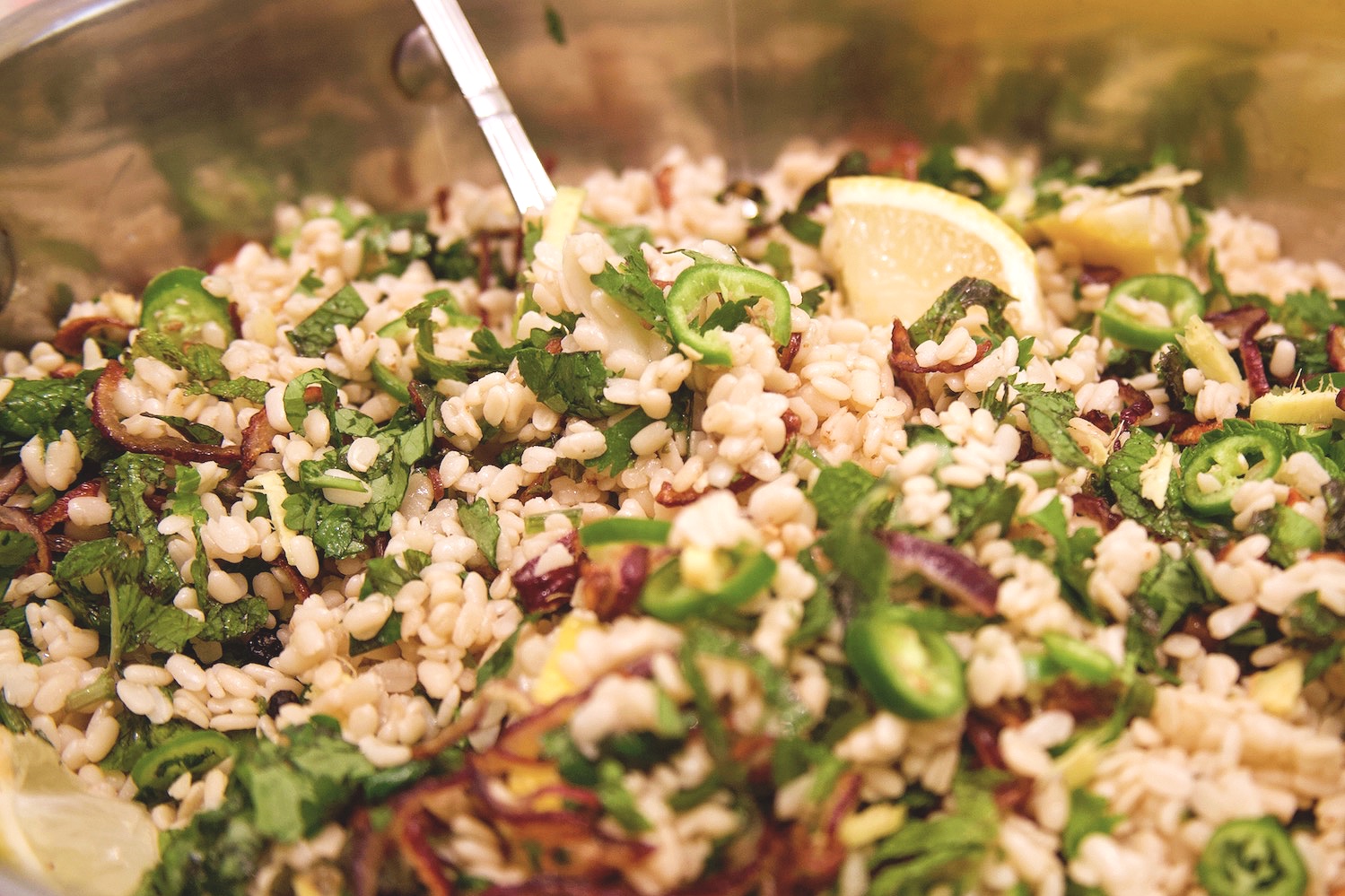Maash ki Dal

vegetarian
start to finish: 60 minutes plus overnight soaking
serves four with roti or rice
This recipe yields a dry yet very flavourful dal. Maash ki dal, while popular in many parts of India and throughout Pakistan, is less common in Hyderabad. Nonetheless, this was my father’s favourite. He just loved the generous garnish of coriander, mint, fried onions, slivered ginger, green chilies and, of course, ghee. In fact, because urad is a heavy dal, the ginger and mint are essential, not just for flavour but also to aid digestion. Serve it Hyderabadi style: with lemons.
Note that the lentils used here, called urad dal, are white. So even though these lentils are known in English as black gram don’t get confused: the inside of this black pulse is white. We are basically using the split black gram with its black skin removed.
Suggested Pairing: serve with roti or hot parathas and tomato chutney.
Ingredients:
For the dal:
1 cup urad dal (aka white urad, which is black gram split and skinned)
1 teaspoon dried red chilies (broken into 4-6 pieces)
½ teaspoon whole black peppercorn
1 teaspoon salt
½ tablespoon chopped fresh garlic
1 tablespoon finely chopped fresh mint leaves
1 scant tablespoon ghee
1¼ cups warm water
For the fried onions and garnishing:
2½ tablespoons ghee
¼ cup finely sliced onions
2 tablespoons chopped fresh mint leaves
3 tablespoons finely chopped coriander
½ tablespoon slivered fresh ginger
2 tablespoons finely sliced green chilies
1 lemon, cut into wedges
Utensils:
large mixing bowl
wide-bottomed saucepan with lid
small saucepan
Method:
In a large mixing bowl, soak the urad dal in a generous amount (at least 4 cups) of lukewarm water overnight (about 8–10 hours) on the countertop. If you are short on time, start with hot water to expedite the softening process and soak for 5 hours.
After soaking sufficiently, drain all the water from the dal, rinse and then transfer the softened dal to a wide-bottomed saucepan.
Add the dry chilies, peppercorn, salt, garlic, mint and ghee to the pan. Pour 1¼ cups warm water overtop. Cover and cook on MEDIUM-LOW for 10 minutes.
Reduce the heat to a notch above LOW, keep covered—stir occasionally too—and continue to cook until the dal is slightly soft and no water remains in the pan (30–40 minutes).
Test for doneness: the lentils should neither be sticky nor mushy. Each lentil should be intact and separate from one another, and when you bite into one, it should have a firmness between al dente and soft. If the dal is too firm, cook for another 10 minutes, but check to ensure there is enough water. If no or little water remains, add an additional ⅛–¼ cup of boiling water and steam on LOW with the pan covered.
When the lentils are tender, shift the pan to a cool backburner.
Prepare the fried onions for the garnish. Heat the ghee in a small saucepan on MEDIUM. Add the onions and sweat for 2–3 minutes, then increase the heat to MEDIUM-HIGH and brown the onions. Pour the ghee and fried onions over the dal.
Finish garnishing with the mint, coriander, ginger and chilies. Serve with lemon wedges on the side.
Tip: Adjust the herbs and spices as you wish: reduce the amount of red and green chilies according to taste; add more raw ginger to the garnish or put less on top and instead offer lots of extra slivers on the side; or leave out the coriander leaves and just stick to mint as your main herb. This is the beauty of South Asian cooking—you can tweak the spices in almost any dish as long as you maintain the core flavour profile. In this case, the ghee and browned onions are a key topping to maash ki dal, while garlic, ginger, mint and hot chilies are the signature spices.
